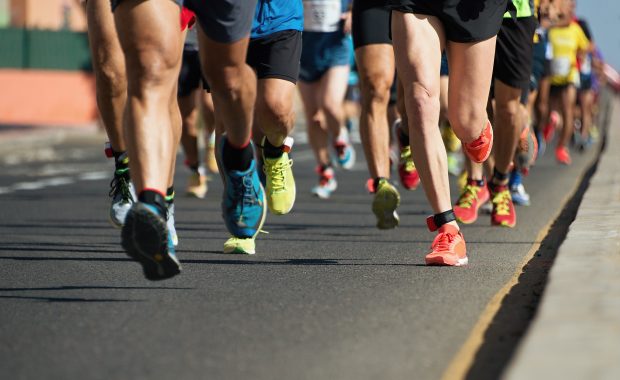
Running is a natural movement that we all can do; however, often we simply transition from walking to running, and then gradually increase the distance and speed. Research indicates over 70% of recreational and elite runners sustain overuse injuries during any 12 month period, so perhaps running is not as natural as we would like to think.
From head to toe, here are a few useful tips to improve your running efficiency and reduce your risk of injury:
- Head positioning: where you look is naturally where the spine is going to fall. Looking down will cause your neck to tilt down and the rest of the spine will follow. Instead, to achieve a comfortable and efficient running posture, look ahead towards the horizon.
- Shoulders: Relax the shoulders by pulling the shoulder blades lightly towards each other and allow the arms to do the work. Ensure the elbows are low and that the shoulders don’t creep up towards your ears when you start to fatigue. Elevating the shoulders can cause shoulder and neck pain, as well as increase upper respiratory breathing, which will reduce lung capacity.
- Arms: Allow the arms to naturally swing forward and back with your leg stride, not across the body. This will assist in maintaining good stride rate and reduce tension through the shoulders. Keep the elbows bent at approximately 90 degrees and have your fingers lightly touching your palms.
- Torso: Keep your torso upright and ‘tall’ by extending through the spine, as if you are being pulled up to the sky by a cable. This will allow you to maximise your lung capacity and maintain adequate body alignment for an efficient strong stride.
- Hips: Hips are the critical point for a good running posture. The hips are the centre of gravity and thus where overall energy is absorbed and then propelled. It is the hips that ensure that the spine is in a natural curve and that the lower limb structures are evenly balanced and aligned. When you hunch forward, the hips will tilt forward, which in effect switches off the main propulsive and stabilising muscles and places significant load on the low back and hip flexor muscles.
- Leg length and turnover: A fast turnover while maintaining a long stride, especially behind you is the key. A cadence of 180 is the gold standard; however, ensure that a faster cadence doesn’t result in a loss of leg drive. Find out what your current cadence is and then add approximately 10%, ensuring that your stride length remains the same.
- Toe push off: Lastly, driving off your big toe completes the propulsive energy transfer from the hips to the ground, to drive the body forward as efficiently as possible.
